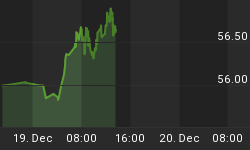Do you think that anyone who bought in the stock market updraft last Tuesday is having second thoughts?
Today's retail sales figures were weak. Ex-autos, sales were down -0.4% versus expectations for unchanged, and revised to -0.3% versus the +0.1% originally reported last month. It's the first consecutive negative prints since 2010, although the 2010 dip obviously didn't lead to anything more sinister. Retail Sales, like Durable Goods, is a volatile series and one must be careful not to exaggerate the importance of any single month. That being said, it isn't just the data but the whole backdrop: the whole package of news and data. It's just not pretty, and it's simply not priced in although it's closer than it was in April.
The best news out of Europe is that there's no one in the queue after Italy! Cyprus stepped up and asked for a bailout for its banks. Cyprus is tiny, but I am sure the timing is not entirely coincidental. "Sheesh, Spain is asking for cash? We better get in there before the money is all gone!"
The Spain bank bailout is proceeding, and seems like it will get done. But, unlike prior bailouts, no one seems to be calling this a "firewall" or claiming that this will finish off the crisis. Maybe that's just because we have the Greek elections coming up, or maybe it's because policymakers have finally learned to shut up and observe that old saying, "Better to remain silent and be thought a fool, than to speak and remove all doubt."[1]
European bond yields are still not reacting well to the whole question of Spanish sovereign bond subordination. In case you're counting, the following Eurozone credits trade over 6% at the 10-year point: Portugal (10.43%), Ireland (7.21%), Italy (6.17%), Greece (still 28.4%), and Spain (6.77%). The next-highest yield is owned by Slovakia (3.52%) (there is no 10-year Cyprus bond that I can find). So it appears that the corral holds all the sick horses and no more are running around. It's incredible, isn't it, that whoever coined the term "PIIGS" several years ago identified the whole group? And yet - supposedly no one saw this coming! Now the simple question is: what do we do with these horses? they won't heal themselves, and it'll be awfully expensive (and perhaps impossible) to nurse them all back to health. In my view, the question is whether someone opens the corral door and lets them run free for the open prairie, away from the rest of the herd, or whether one of the horses kicks a hole in the fence. I don't think restoring them to the herd is the right solution, and it's just a question of how they get released.
.
Along with Initial Claims (Consensus: 375k) on Thursday the BLS will also release CPI. The consensus is once again for a "soft" 0.2% rise on core inflation - that is, 0.15% through 0.19%, which would round up to 0.2% but cause the year-on-year rise in core prices to round down to +2.2%.
I think they are likely to be surprised again on the upside. There is still some lagged upward pressure on housing inflation; although this impulse is fading it is premature to expect it to begin to drag again. Medical Care services ought to continue to accelerate. Apparel is still rising, and I think that's not an aberration but a trend.
Economists are forecasting ebbing inflationary pressures based on the idea that these things ought to correct. I don't think there's yet any evidence that they have.
Now, headline CPI should print negative, dropping the year-on-year figure to only 1.8%. It makes no sense to focus on headline inflation; it isn't useful for forecasting and if anything, when it is below core it tends to indicate a more stimulative economic environment (because low energy prices are stimulative). However, you can expect many pundits to crow about how headline dropped to 2.0% or below (forecast is 1.8% y/y), and how that frees up the Fed to begin QE. While core inflation is over 2% and rising, a responsible central bank wouldn't be considering QE...and without loss of consistency, I can say that the Fed probably will.
[1] Readers may make the obvious connection between this saying, and a certain author who has obviously not taken the advice to heart.















